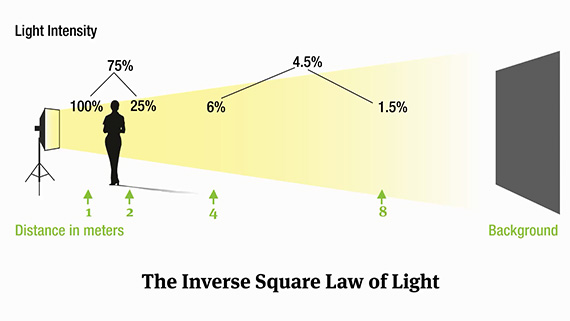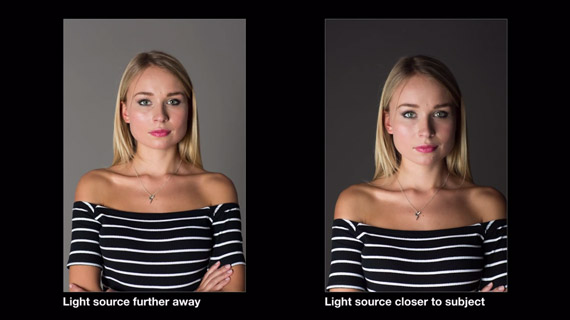The inverse square law is a useful bit of information when it comes to lighting for photography. That being said, it can also be quite confusing to understand. Fortunately, Karl Taylor has made this two part video tutorial to show us what the inverse square law is all about and how it can be used to improve your photos:
Part One
Part Two
Inverse Square Law
According to Wikipedia,
“In physics, an inverse-square law is any physical law stating that a specified physical quantity or intensity is inversely proportional to the square of the distance from the source of that physical quantity.”
So what exactly does that mean, and what does it have to do with photography?
The Inverse Square Law of Light Simplified
A good starting point to understanding the inverse square law is to understand the way that light falls off over a distance. This is important when photographing people, especially groups of two or more people, because the amount of light that falls onto each subject will most likely vary. For example, if you have three subjects lined up shoulder to shoulder in a row, and the light source is placed to the front right side of the group, the light that falls on the subject closest to the light source will be stronger than the light that falls onto the second person, and that light will also be different than the light that falls on the third.

Light Intensity Decreases with Distance
“Basically, if you double the distance of the light from the subject, you’ll quarter the power, and so on and so on.”
The distance of the light from your model can also affect the exposure of your model in relation to the background. For example, let’s take a look at the photo below, which used a single softbox as the light source:

Inverse Square Law
In the first exposure, where the light source is farther away, the background is light in relation to the model. But when the light source is moved in closer to the subject, the background is much darker in comparison to the models’ face.
So, to put the inverse square law of light into simple terms, if you are having a difficult time getting the right kind of light onto your subject or background, try moving the light source farther or closer to your subject to create the look you’re after.
Like This Article?
Don't Miss The Next One!
Join over 100,000 photographers of all experience levels who receive our free photography tips and articles to stay current:






Nowhere in this article did I see the author refer to hard or soft light. The distance affects the exposure or light intensity needed to properly illuminate the subject and it also affects the shadows or the fall-off of the light on the subject. Close=quick fall-off Far=slower fall-off. The diagram depicts this perfectly. Bernie’s statement is true about hard and soft and light source size but this phenomenon is due to the inverse square law as well.. Happy shooting.
>>’The closer the subject is to the light source, the more harsh….
Sorry, this is incorrect, you’ve go it the wrong way around. The closer the light source, the larger it becomes relative to the subject. Therefore it becomes softer, and when it’s further away it becomes harder.
Maybe you were referring to the amount of contrast?
Good article otherwise, thanks.
Cheers,
Bernie